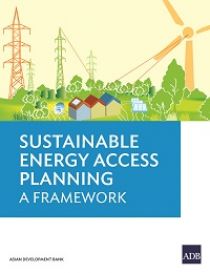Sustainable energy access planning: a framework
 Sustainable energy access planning is aimed at developing a socially inclusive energy supply system that gives both the poor and the nonpoor sustainable access to at least the minimum amount of energy for their basic needs. Unlike traditional energy planning, sustainable energy access planning (SEAP) gives primary importance to the energy demand of both poor and nonpoor households, the need to make cleaner energy services more affordable to the poor, the costs of both supply-side and demand-side access options, and the sustainability of technology and resource options. As such, this type of energy planning contributes to low carbon development and achievement of Sustainable Energy for All objectives. This report presents a framework for sustainable energy access planning that planners and policy makers can use to design cost-effective clean energy supply systems that both poor and nonpoor can sustainably access to meet at least the minimum amount of energy for their basic needs. The report discusses the multidimensional assessments involved in this type of planning, as well as their interlinkages and implementation issues.
Sustainable energy access planning is aimed at developing a socially inclusive energy supply system that gives both the poor and the nonpoor sustainable access to at least the minimum amount of energy for their basic needs. Unlike traditional energy planning, sustainable energy access planning (SEAP) gives primary importance to the energy demand of both poor and nonpoor households, the need to make cleaner energy services more affordable to the poor, the costs of both supply-side and demand-side access options, and the sustainability of technology and resource options. As such, this type of energy planning contributes to low carbon development and achievement of Sustainable Energy for All objectives. This report presents a framework for sustainable energy access planning that planners and policy makers can use to design cost-effective clean energy supply systems that both poor and nonpoor can sustainably access to meet at least the minimum amount of energy for their basic needs. The report discusses the multidimensional assessments involved in this type of planning, as well as their interlinkages and implementation issues.
Related Content
- Scenarios for the energy transition: experience and good practices in Africa
- Regulatory Indicators for Sustainable Energy (RISE) 2022: building resilience
- Asia and the Pacific’s Progress towards Sustainable Development Goal 7
- Policies and regulations for renewable energy mini-grids
- State of electricity access report 2017
- Regulatory indicators for sustainable energy: a global scorecard for policy makers
